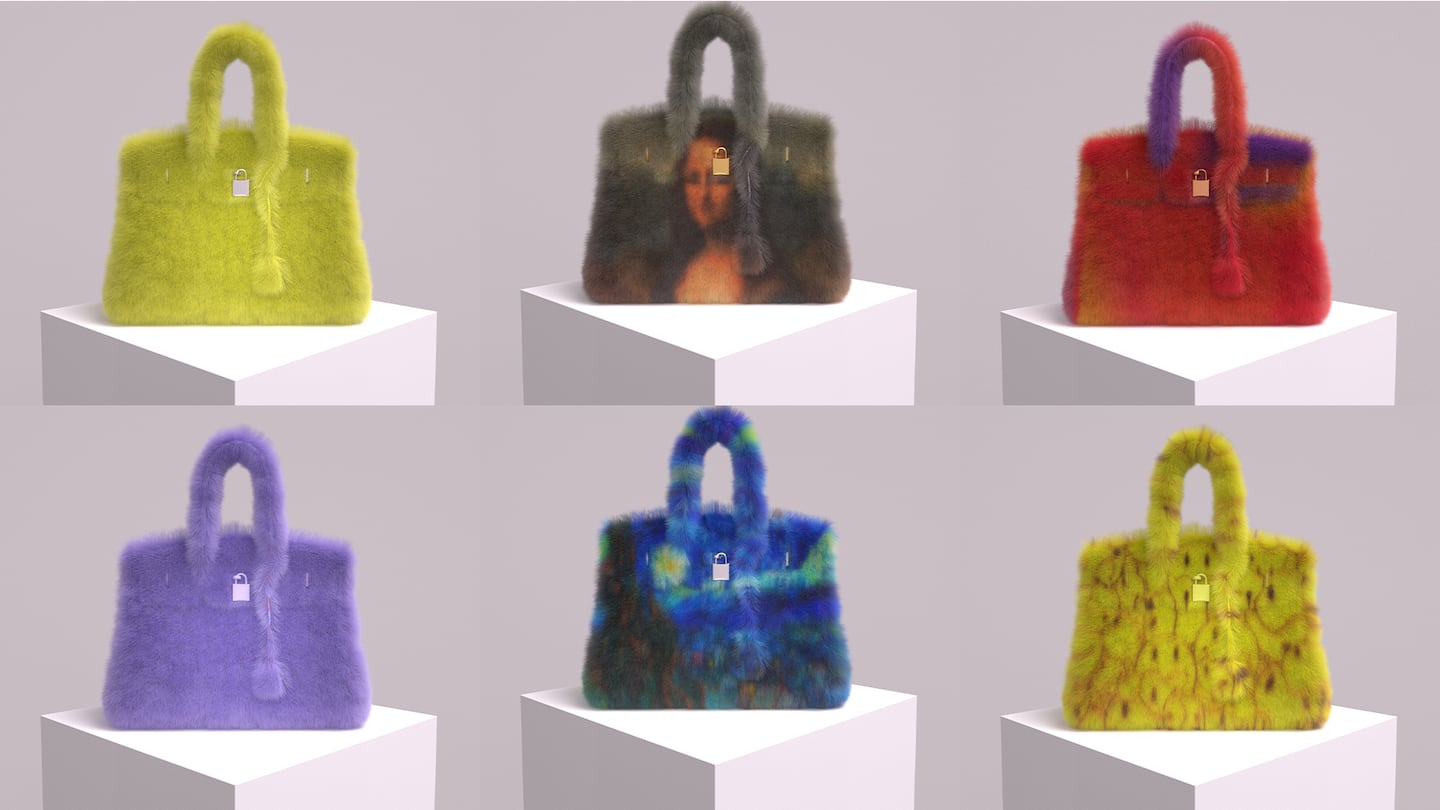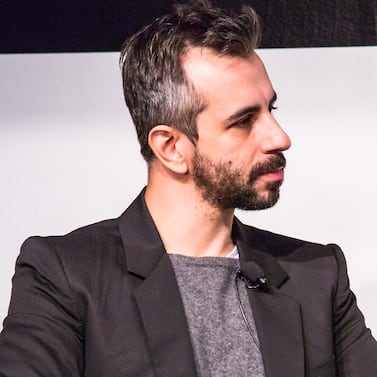
The Business of Fashion
Agenda-setting intelligence, analysis and advice for the global fashion community.

Agenda-setting intelligence, analysis and advice for the global fashion community.

The legal battle between Hermès and the creator of the MetaBirkins — virtual interpretations of the famed bag sold as non-fungible tokens (NFTs) — is shaping up as one of fashion’s big intellectual-property fights of the blockchain era.
But whatever the outcome, luxury brands probably won’t like the precedent set.
In its lawsuit filed Jan. 14, Hermès argued that Mason Rothschild misused the Birkin name by selling a collection of 100 MetaBirkin NFTs in December. Its case is similar to countless others brought by luxury brands against alleged counterfeiters: the label claims Rothschild infringed on and diluted Hermès’ trademark, and that consumers might be confused into thinking Hermès has some association with the MetaBirkins.
The technological underpinnings of NFTs turn what might have been an open-and-shut case into something far more complex, legal experts say. An NFT is a blockchain entry pointing to a digital asset such as an image, which itself resides on a separate server. It’s effectively a receipt proving ownership, rather than the image itself.
ADVERTISEMENT
“Many people assume that, when you talk about an NFT, the content of the NFT is inside the token, which it is not, and because it is not, there is no unauthorised reproduction,” said Primavera De Filippi, co-author of “Blockchain and the Law” and a researcher at the National Centre of Scientific Research in Paris and Harvard’s Berkman Klein Center for Internet & Society. “From a strictly speaking IP perspective, I don’t think there is much leverage.”
It leaves Hermès having to lean into other arguments. Even if it ultimately prevails in court, it would find it difficult to take the existing NFTs out of circulation: those MetaBirkins will continue to exist on the blockchain. If anything, a drawn-out legal drama could drive up their value with collectors.
A spokesperson for Hermès said the company does not comment on ongoing legal action.
Rothschild, who had not sent comment by the time this story published, has previously said the MetaBirkins name is sufficiently different enough to not cause confusion. He also posted disclaimers on the MetaBirkins site and in other locations stating the project was not associated with Hermès and the Birkin, though in its suit Hermès cited these as additional examples of infringement.
The issue of how shoppers can identify a genuine Hermès product is one reason the company might not be thrilled about Rothschild’s MetaBirkins. Hermès points to the quality of its bags, from the leather it uses to the training it gives the artisans who stitch them, as a distinguishing feature and the reason for the famously limited supply of Birkins. When it comes to virtual goods, these distinctions disappear.
“This is a battle for ownership of luxury in the metaverse,” said Susan Scafidi, academic director of the Fashion Law Institute at Fordham University. “In the virtual world we can’t rely on claims of scarcity and quality in the same way, and we’ve found a way to create artificial scarcity for what is essentially a digital image via NFTs.”
What Happens If Hermès Wins
Hermès has demanded in its suit that Rothschild turn over any profits from the MetaBirkins as well as pay damages and Hermès’ legal costs. Not only that, it insists Rothschild “deliver up for destruction to Hermès all unauthorised products and advertisements in his possession or under his control” bearing its trademarks.
ADVERTISEMENT
But once an NFT is created, the entry can’t be erased from the blockchain. The nearest approximation might be “burning” the NFT, meaning transferring it to an inaccessible address.
Even if Hermès will settle for burning any MetaBirkins it can get its hands on, it’s not straightforward whether a court would authorise it to do so.
“To me, the big problem is, from a precedent perspective, it will be dangerous to say that these tokens will need to be destroyed because they are linking to something as opposed to actually reproducing,” said De Filippi.
Hermès does have other options. One step it has taken with the MetaBirkins already released is to ask companies such as OpenSea, the largest NFT marketplace, to remove them from sale. Though blockchains are decentralised, meaning there is no one authority overseeing them, the main ways NFT holders sell or see their items are still centrally controlled platforms.
OpenSea complied, but the MetaBirkins are still listed on other NFT marketplaces, such as LooksRare. Their price appears to have fallen sharply: before the NFTs were removed from OpenSea, they were trading for nearly $20,000 and one had sold for roughly $46,000. On LooksRare, one sold on Jan. 22 for the equivalent of about $3,600.
But it’s possible the notoriety they gain from the legal fight could prompt their value to grow.
“Just knowing you have one of the first few official formal black-market goods — disapproved, litigated, but they can’t take it from your [crypto] wallet — that would make it have some pretty serious value,” said Jacob Martin, founder of JTM Tech Law, which advises clients on legal issues around NFTs. (Martin said he spoke to Rothschild about the MetaBirkins in the past but was never contracted or paid for any work.)
While there is a chance the parties will settle before the case makes it to trial, the fact that Hermès decided to pursue a case at all is interesting in itself, according to Scafidi.
ADVERTISEMENT
Rothschild’s main defence has been that his NFTs are original art, and luxury brands have historically been reluctant to be seen as attacking artists. Hermès did not, for instance, take action against a previous work of Rothschild’s involving the Birkin name and image. Last May, he collaborated with artist Eric Ramirez to release the Baby Birkin, a single NFT showing a fetus gestating in a transparent Birkin bag and sold for $23,500 at online retailer Basic.Space.
Scafidi believes the message from Hermès is that it won’t bother to go after one-off works but will pursue cases against a series of virtual goods.
“They let the painting in the gallery stand while they go after the T-shirts or the vinyl copies on the corner,” she said. “This is smack in the grey area.”
Fashion and art were already filled with young creators borrowing brand icons. The practice is taking on new digital dimensions as NFTs take off.
Gucci’s executive vice president for brand and customer engagement believes the immersive digital world signals a paradigm shift for luxury brands and expects it to drive a ‘very significant new revenue stream’ for the brand in the years ahead.
What’s selling and who’s buying as fashion brands from Dolce & Gabbana to Rebecca Minkoff jump into the surging NFT market.

Marc Bain is Technology Correspondent at The Business of Fashion. He is based in New York and drives BoF’s coverage of technology and innovation, from start-ups to Big Tech.
The app, owned by TikTok parent company ByteDance, has been promising to help emerging US labels get started selling in China at the same time that TikTok stares down a ban by the US for its ties to China.
Zero10 offers digital solutions through AR mirrors, leveraged in-store and in window displays, to brands like Tommy Hilfiger and Coach. Co-founder and CEO George Yashin discusses the latest advancements in AR and how fashion companies can leverage the technology to boost consumer experiences via retail touchpoints and brand experiences.
Four years ago, when the Trump administration threatened to ban TikTok in the US, its Chinese parent company ByteDance Ltd. worked out a preliminary deal to sell the short video app’s business. Not this time.
Brands are using them for design tasks, in their marketing, on their e-commerce sites and in augmented-reality experiences such as virtual try-on, with more applications still emerging.